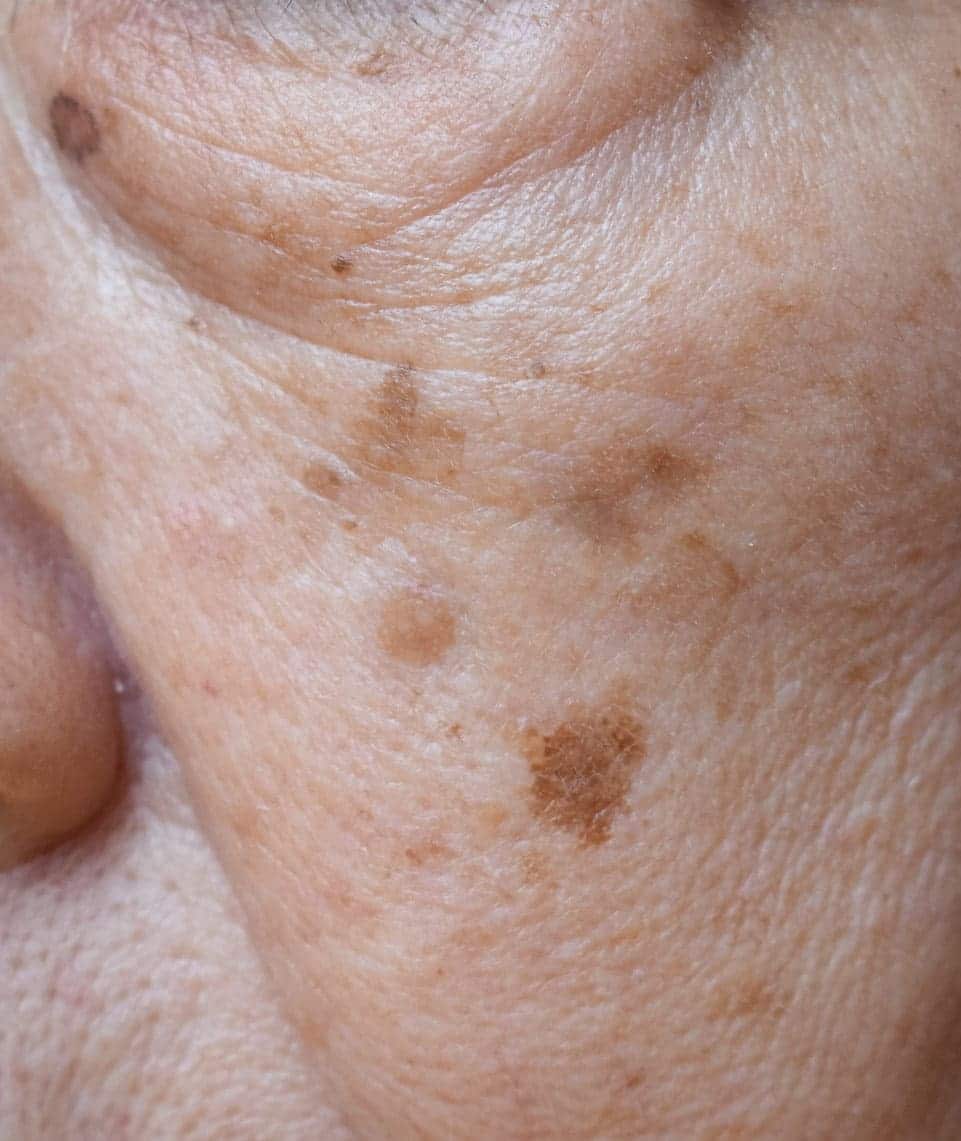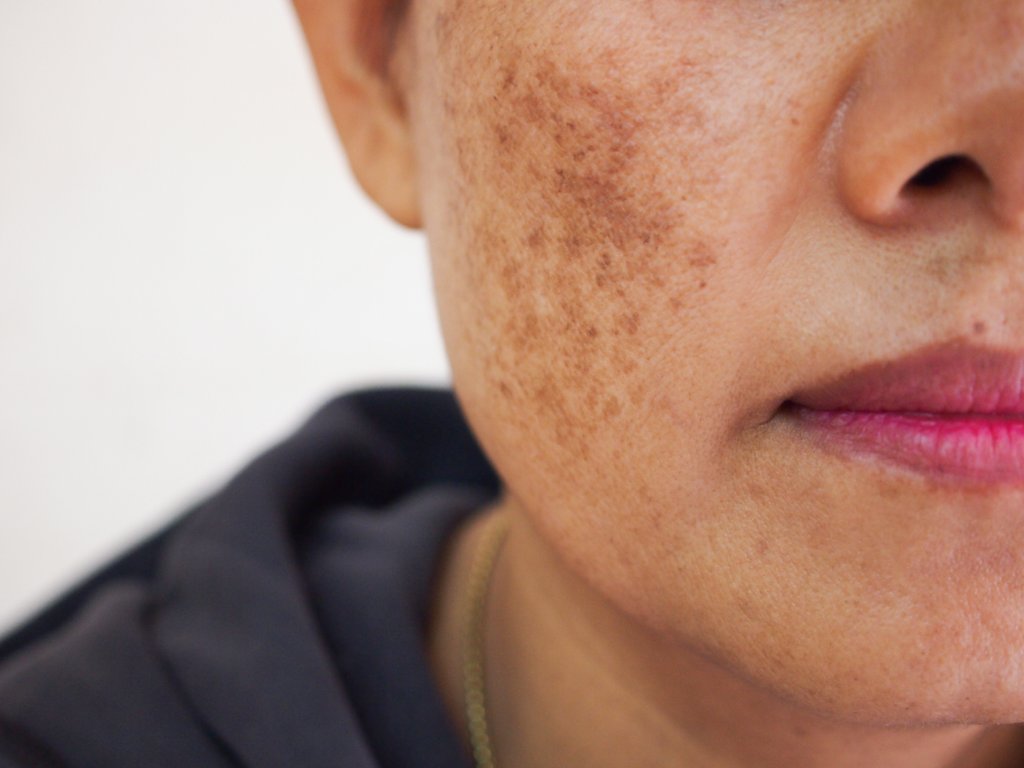HIFU Treatment Reviews
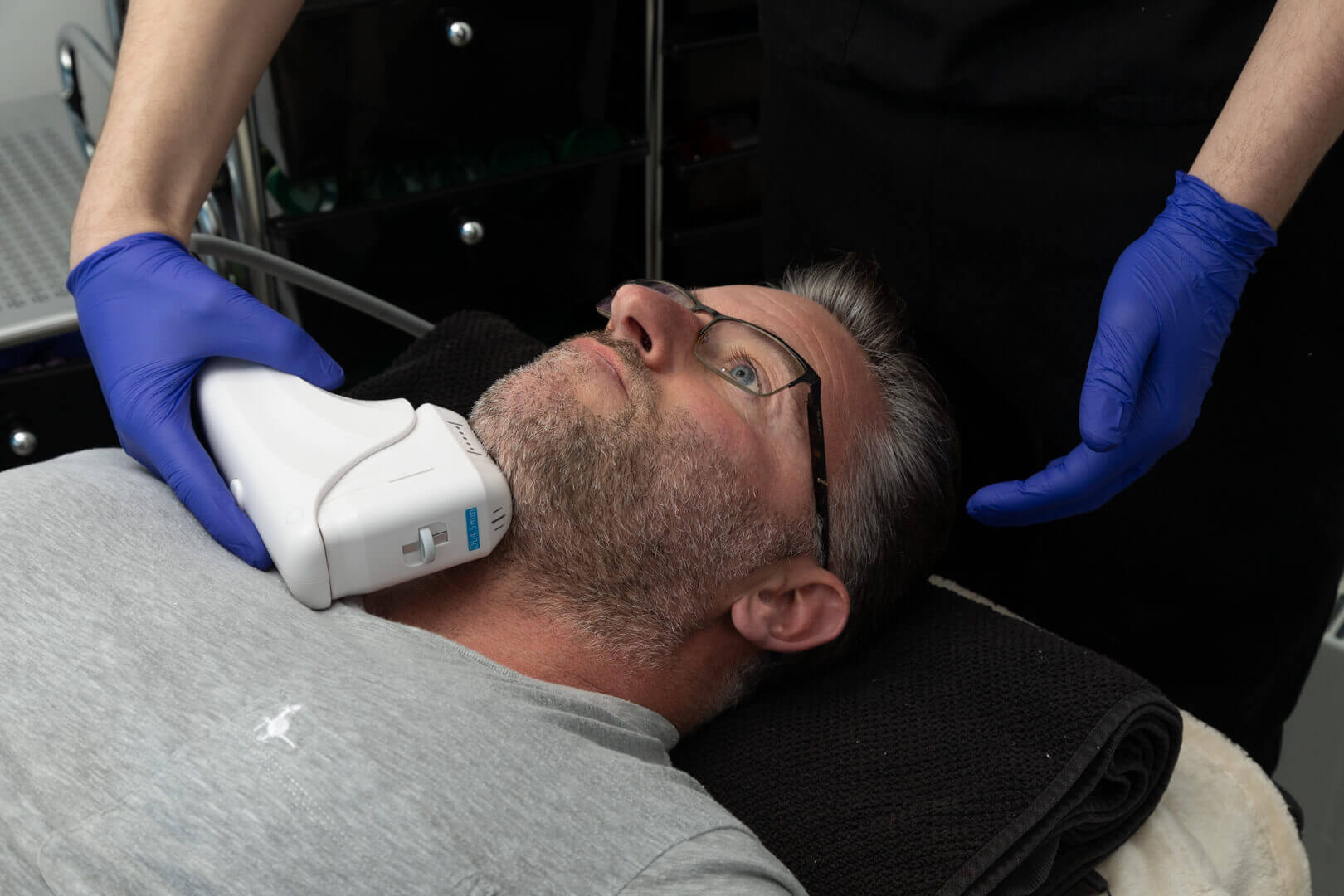
HIFU Facial Treatment Reviews
HIFU targets brow, jowl and neck lifting, as well as overall skin tightening, rejuvenation and deeper fat cells.
High-intensity focused ultrasound, or commonly referred to as HIFU, is a relatively new non surgical cosmetic treatment for skin tightening that some consider a noninvasive and painless replacement for facelifts.
HIFU treatments are based on hyperthermia lifting theory. The HIFU transducer irradiates 65-75Cº of high intensity focused ultrasound (HIFU) energy into the skin, this then creates thermal coagulation on the target layers of skin tissue with no damage on the skin surface. Following the initial treatment, the skin starts to undergo wound healing process that simulates collagen synthesis and regeneration.
Unlike lasers, radio frequency, surgery and other cosmetic procedures, HIFU bypasses the surface of the skin to deliver the right amount of ultrasound energy at the right depths within the skin at the desired temperature. This HIFU energy triggers a natural response under the skin, causing the body to enter into the regenerative process, resulting in the production of new collagen.
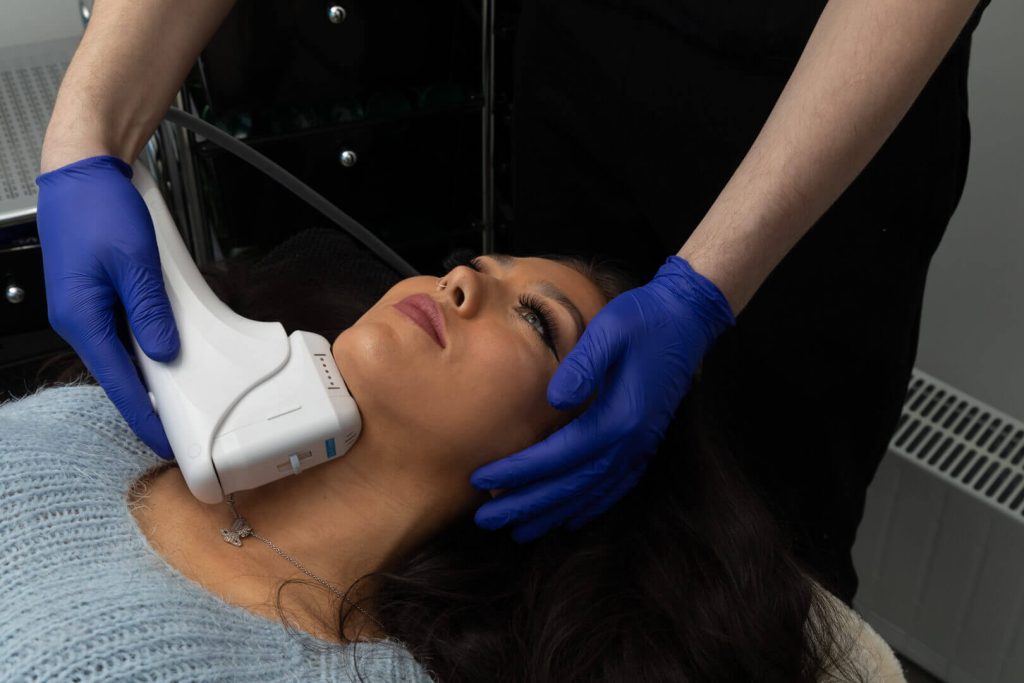
Can High-Intensity Focused Ultrasound (HIFU) Treatment Replace Facelifts?
The first reported use of HIFU for aesthetic use was in 2008. HIFU was then approved by the Food and Drug Administration (FDA) in 2009 for brow lifts. The device was also cleared by the FDA in 2014 to improve lines and wrinkles of the upper chest and neckline (décolletage). Several small clinical trials have found HIFU to be safe and effective for facial lifting and refining wrinkles. Patients were able to see results in a few months after treatment, without the risks associated with surgery.
HIFU uses focused ultrasound energy to target the layers of skin just below the surface. The ultrasound energy causes the tissue to heat up rapidly. Once the cells in the targeted area reach a certain temperature, they experience cellular damage. While this may seem counterintuitive, the damage actually stimulates the cells to produce more collagen. The increase in collagen results in tighter, firmer skin with fewer wrinkles. Since the high-frequency ultrasound beams are focused on a specific tissue site below the skin’s surface, there’s no damage to the upper layers of the skin and adjacent issue.
So far, HIFU has been found to be a promising treatment that could replace face lifts, especially in younger people who don’t want the risks and recovery time associated with surgery. HIFU won’t work as well for people with more severe cases of sagging skin.
Benefits of HIFU
HIFU has many aesthetic benefits, including:
- HIFU offers long-lasting effects, tightens skin and promotes wrinkle reduction.
- HIFU helps tighten the jowls, enhances jawline definition and sculpts the chin area.
- HIFU helps tighten sagging skin on the neck (sometimes called turkey neck).
- The HIFU treatment is a non-invasive, non-surgical procedure with no downtime.
- Wrinkle reduction and smoothing out of the skin.
- Lifting the cheeks, eyebrows, and eyelids
- Tightening of the décolletage
- HIFU delivers visible effects in lifting and tightening. It will also create new collagen which will help your skin maintain its youthful glow.
HIFU vs. Facelift
While HIFU carries far fewer risks and costs than a surgical facelift, results may not last as long and repeated procedures may be needed. Here’s a summary of the major differences between each procedure:
HIFU Treatment
- Non-Invasive, non-surgical and no incisions
- Cost of treatment is between £750 - £2,000
- Recovery time after the procedure - none only slight redness.
- Risk of treatment include; mild redness and swelling.
- Efficacy of the treatment - In one study, 94% of people described improvement in skin lifting at a 3-month follow-up visit.
- Results of the treatment - The same study found that improvement in appearance persisted for at least 6 months. You will likely need to have additional HIFU treatments once the natural ageing process takes over.
Surgical Facelift
- Invasive procedure that requires incisions and sutures.
- Cost of treatment is between £5,000 - £12,000.
- Recovery time after the procedure is on average 2–4 weeks.
- Risk of treatment include; anesthesia risks, bleeding, infection, blood clots, pain or scarring and hair loss at the incision site.
- Efficacy of the treatment - In one study, 97.8% of people described the improvement as very good or beyond expectations after one year.
- Results of the treatment - In one study, 68.5% percent of people rated improvement as very good or beyond expectations after an average of 12.6 years following the procedure.
HIFU For Face Cost
The average cost for a nonsurgical skin tightening procedure in 2017 was £1,450. This is a drastic difference from a surgical facelift procedure, which carries an average cost of £8,500. Ultimately, the cost will depend the area being treated and your geographic location, as well as the total number of sessions needed to achieve the desired results.
You should contact an HIFU provider in your area for an estimate. HIFU costing should be displayed on the providers website and it is important to note that these treatments should not be cheap or discounted heavy. If it sounds too cheap then it is probably not the real procedure. RT Aesthetics set out our price-list on our website to ensure transparency and will also price match any like-for-like treatment.
What Does HIFU Feel Like?
The HIFU treatment is not a painful procedure. As the high-intensity focused ultrasound energy is delivered, you will feel tiny amounts of energy being deposited to precise depths within the skin. This is an indication that the collagen-building process has been initiated. Most clients describe feeling either pin pricks sensation or a feeling of heat. Comfort levels vary from client to client, however, this sensation is only temporary and last while the ultrasound energy is administered. Some clients take paracetamol before the procedure to ease any discomfort., although this is not necessary.
HIFU Procedure
There’s no special preparation needed before having an HIFU procedure. You should remove all makeup and skin care products from the target area before treatment. Here’s what to expect at your appointment:
- An aesthetic practitioner will first clean the targeted area.
- The aesthetic practitioner then applies an ultrasound gel.
- The aesthetic practitioner will draw lines on your face to ensure all problem areas are targeted and to highlight areas where HIFU cannot be used, such as, crucial nerves, veins and thyroid gland.
- The HIFU device is placed against the skin.
- Using an ultrasound viewer, the aesthetic practitioner adjusts the device to the right setting.
- Ultrasound energy is then delivered to the target area in short pulses for roughly 1 to 3 hours depending on the area of treatment.
- The device is removed.
- At the end of the treatment the practitioner will apply a collagen face mask to the face, this will promote healing and collagen production. You can then opt to have 20 minutes of red light therapy to help promote healing, collagen production and to settle the skin. These are charged at an additional cost.
HIFU Treatment Side Effects?
After the HIFU treatment the skin may appear ‘flushed’ at first, but the redness should disappear within a few hours post-treatment. Some clients experience light swelling, tingling or tenderness to the touch, however, these are temporary and will fade within 7 – 10 days post-treatment. Less common side effects may include temporary bruising or numbness on small areas of skin. As with any medical or cosmetic procedure, there are the possibility for rarer side effects, which your aesthetic practitioner will review with you during your face-to-face consultation.
How Many HIFU Treatments Are Needed?
Many clients only need one treatment of HIFU. However, based on the degree of skin laxity, the biological response to ultrasound energy and the clients collagen-building process, some clients benefit from additional treatment after 8 – 12 weeks. Results from HIFU treatment can be seen within 12 weeks, with further results being reported for up to 6 months after the initial procedure. Clients who have undergone HIFU treatment can benefit from long lasting results in excess of 2 – 3 years*. Although, as the skin continues to age, future touch-up treatments may be taken by the client yearly, this can help clients keep pace with the body’s natural ageing process.
Book Your HIFU Consultation Today
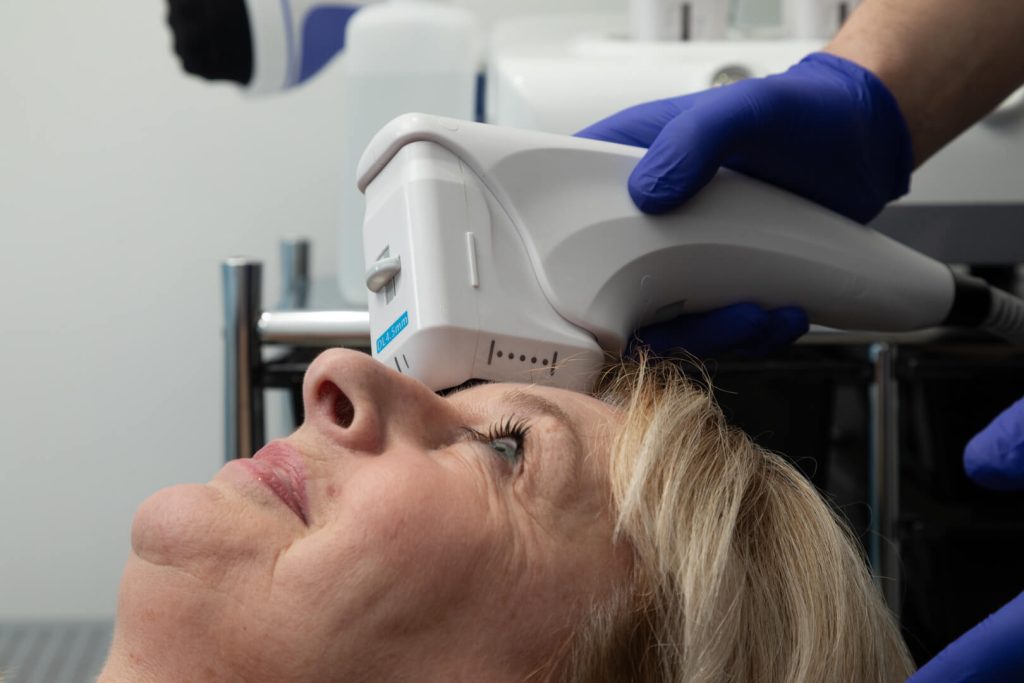
Get the latest HIFU treatment at our North East clinic in Newcastle Upon Tyne. We use the latest 4D HIFU Treatment ensuring you get the best possible results. Check out our results page to hear what our clients say or simply book a face-to-face consultation appointment.
RT Aesthetics Newcastle is the only clinic in the North of England to offer 4D HIFU facial treatments. With 4D HIFU the results are 87% more effective with an increase rate of 97% client satisfaction. 4D HIFU have their own serial number to track each clients results, they fire 850,000 more dots into the treatment area, resulting in increased results and efficiency.
[splitcta]
Treatments Areas With HIFU
There are many areas you can treat with the 4D HIFU treatment. These are some of the areas we can treat, however this is not a full list so please contact us to request an area you want to tighten.
- Full Face
- Forehead
- Frown Lines
- Eyebrows
- Crow’s Feet
- Cheeks
- Double Chins
- Sagging Jowls
- Sagging Neck
- Décolletage
- Arms
- Hips
- Flanks
- Bottoms




